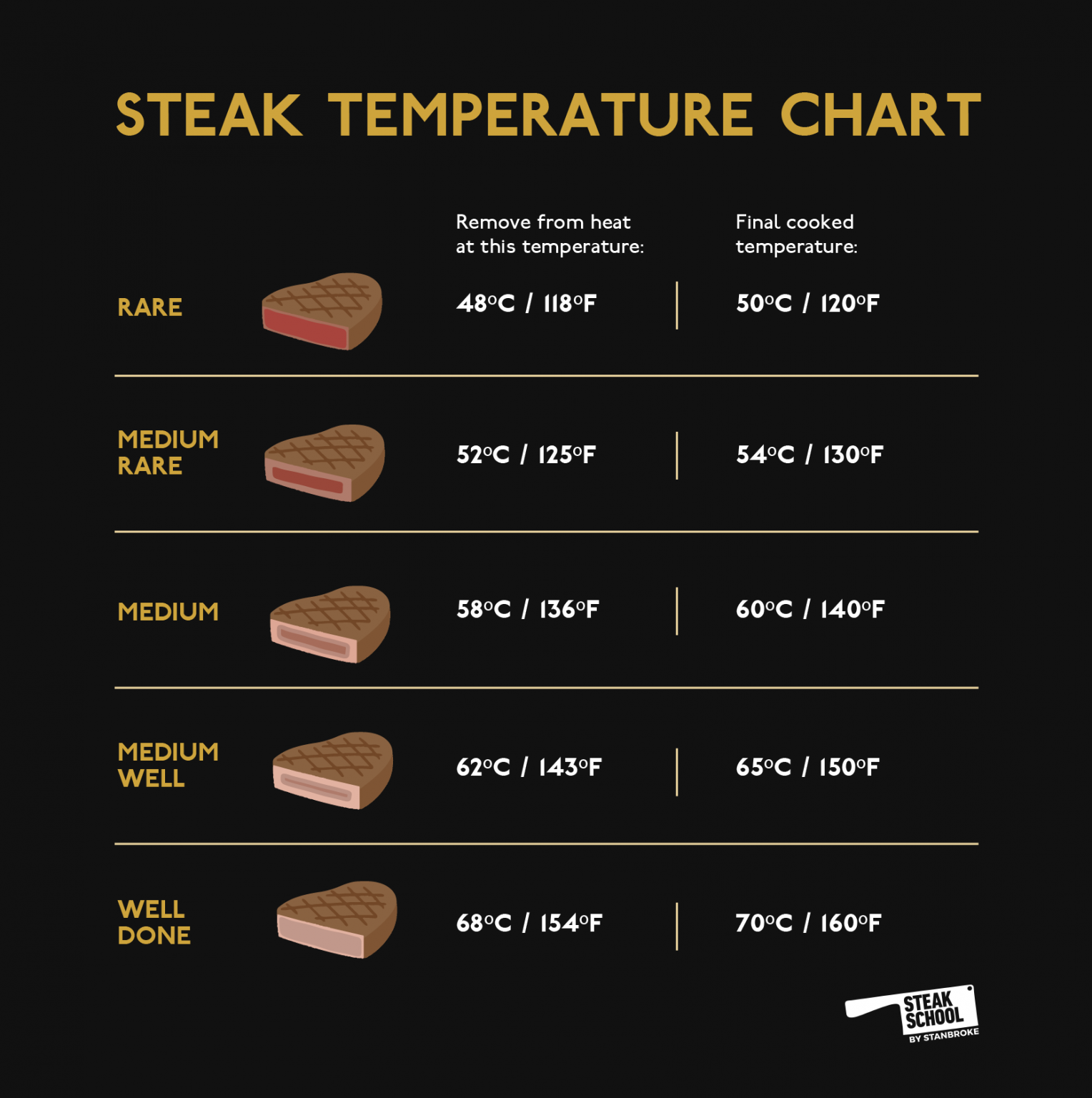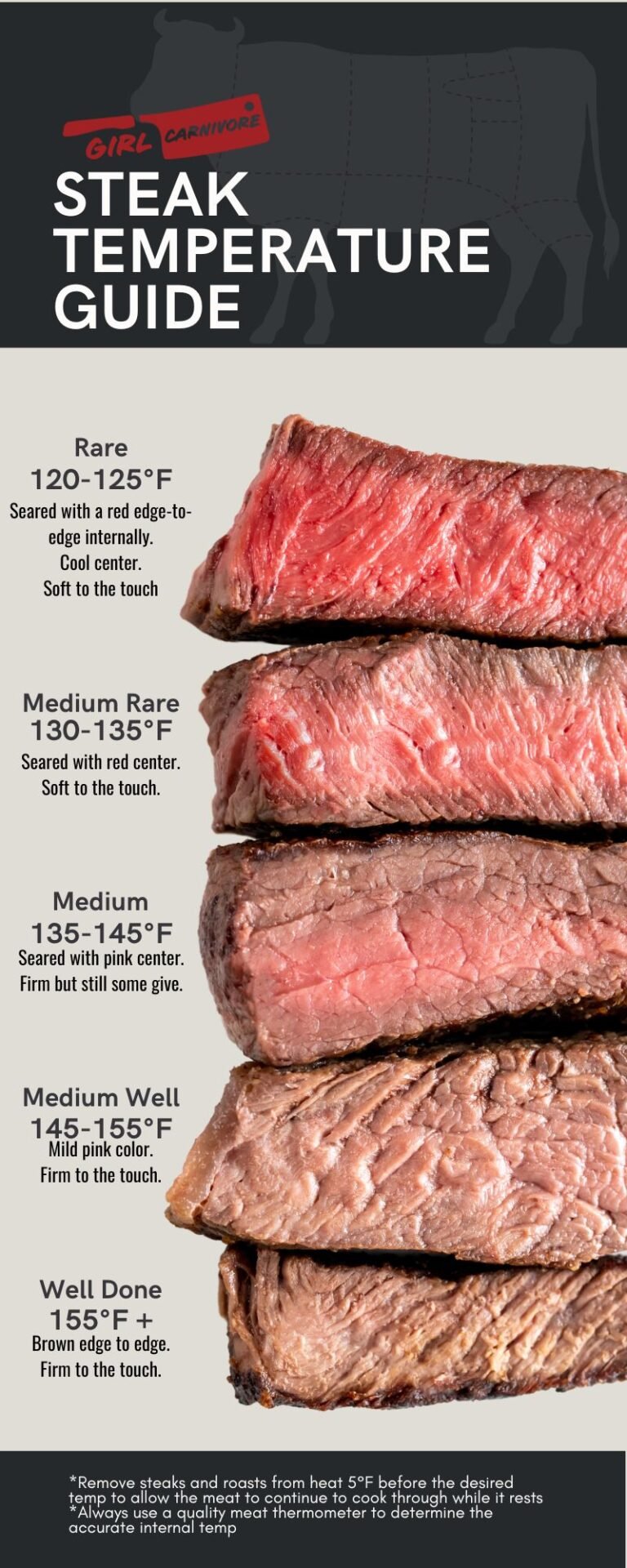Ever wondered what makes a steak tender, juicy, and packed with flavor? It all comes down to the steak internal temp. Yep, you heard that right! Cooking steak isn’t just about slapping it on a grill or tossing it in a pan. It’s about understanding the science behind the internal temperature that ensures your steak is cooked to perfection. Whether you’re a seasoned chef or a total newbie in the kitchen, mastering steak internal temp is the secret weapon you need to elevate your game.
You might be thinking, “Do I really need to worry about the internal temp of my steak?” The answer is a big fat YES. Sure, you can eyeball it or cut into the meat to check its doneness, but why ruin the presentation when there’s a better way? By paying attention to the steak internal temp, you can achieve that perfect balance of flavor and texture every single time.
So, grab your thermometer (yes, you’ll need one for this), and let’s dive into the world of steak cooking. We’re about to uncover the secrets that will turn you into a steak-cooking legend. Stick around because this guide is packed with tips, tricks, and everything you need to know about steak internal temp.
Read also:Anjali Arora Mms Xxx Hd
Table of Contents
- What is Steak Internal Temp?
- Why Does Steak Internal Temp Matter?
- Biography of a Perfect Steak
- Tools You Need for Steak Cooking
- Ideal Temp Ranges for Different Doneness
- Common Mistakes to Avoid
- Why Resting the Steak is Important
- Tips for Cooking the Perfect Steak
- Health Benefits of Properly Cooked Steak
- Conclusion: Take Your Steak Game to the Next Level
What is Steak Internal Temp?
Let’s break it down real quick. Steak internal temp refers to the temperature inside the steak during cooking. It’s what determines whether your steak turns out rare, medium-rare, medium, well-done, or anything in between. Think of it as the heartbeat of your steak. Get it wrong, and you could end up with a dry, overcooked piece of meat—or worse, an undercooked one that’s unsafe to eat.
But here’s the thing: the internal temp isn’t just about personal preference. It’s also about food safety. The USDA recommends cooking beef to at least 145°F (63°C) for safety reasons, but many steak enthusiasts prefer lower temps for that juicy, tender experience. So, where do you strike the balance? That’s what we’re here to figure out.
Why Does Steak Internal Temp Matter?
Here’s the deal: if you’re cooking steak without paying attention to the internal temp, you’re basically flying blind. Sure, you might get lucky once in a while, but consistency is key when it comes to great food. Knowing the exact temp of your steak allows you to control the cooking process and achieve the doneness you desire every single time.
Plus, let’s not forget about food safety. Undercooked steak can harbor harmful bacteria like E. coli and Salmonella, which can make you seriously sick. By monitoring the internal temp, you can ensure that your steak is safe to eat while still being delicious.
Biography of a Perfect Steak
Before we dive deeper into the world of steak internal temp, let’s take a moment to appreciate the journey of a perfect steak. From farm to table, every step matters. Here’s a quick breakdown of what makes a steak truly exceptional:
| Attribute | Details |
|---|---|
| Cut | Popular cuts include ribeye, filet mignon, sirloin, and New York strip. |
| Marbling | The fat content within the meat adds flavor and tenderness. |
| Aging | Wet or dry aging enhances the flavor and texture of the steak. |
| Source | Grass-fed vs grain-fed affects the taste and nutritional profile. |
Tools You Need for Steak Cooking
Now that we’ve covered the basics, let’s talk about the tools you’ll need to cook the perfect steak. Sure, you can wing it, but having the right gear makes all the difference. Here’s what you’ll need:
Read also:Subhashree Sahu Bathroom Nude Video
- Instant-read thermometer: This is your best friend when it comes to checking steak internal temp.
- Cooking surface: Whether it’s a grill, skillet, or oven, choose the one that suits your cooking style.
- Tongs: Forget the fork; tongs are gentler on the meat and won’t let all those juices escape.
- Seasoning: Salt, pepper, and maybe a little garlic or rosemary can take your steak to the next level.
Ideal Temp Ranges for Different Doneness
So, what’s the magic number when it comes to steak internal temp? It depends on how you like your steak cooked. Here’s a quick guide:
- Rare: 120°F - 125°F (49°C - 52°C)
- Medium-Rare: 130°F - 135°F (54°C - 57°C)
- Medium: 140°F - 145°F (60°C - 63°C)
- Medium-Well: 150°F - 155°F (66°C - 68°C)
- Well-Done: 160°F+ (71°C+)
Keep in mind that the temp will continue to rise even after you remove the steak from the heat. This is called carryover cooking, and it’s why you should take your steak off the heat a few degrees before reaching your desired temp.
Common Mistakes to Avoid
Even the best chefs make mistakes sometimes. Here are a few common ones to watch out for:
- Not letting the steak rest before cooking: This can lead to uneven cooking.
- Flipping the steak too often: Patience is key. Let the steak develop a nice crust before flipping.
- Overcooking: Once you pass the ideal temp, there’s no going back. Use that thermometer!
Why Resting the Steak is Important
After you’ve cooked your steak to perfection, don’t forget to let it rest. Resting allows the juices to redistribute throughout the meat, ensuring that every bite is as juicy as the last. Aim for about 5-10 minutes of resting time, depending on the thickness of the steak.
Pro tip: Cover the steak loosely with foil to keep it warm while it rests. This way, you won’t lose any of that precious heat.
Tips for Cooking the Perfect Steak
Ready to take your steak game to the next level? Here are a few tips to keep in mind:
- Start with room temp steak: Take your steak out of the fridge about 30 minutes before cooking.
- Season generously: Don’t be shy with the salt and pepper. These simple seasonings can work wonders.
- Use high heat: Sear the steak on high heat to lock in those juices.
- Let it rest: As we’ve already discussed, resting is crucial for a juicy steak.
Health Benefits of Properly Cooked Steak
Believe it or not, steak can be part of a healthy diet when cooked properly. Lean cuts like sirloin or filet mignon are packed with protein and essential nutrients like iron and zinc. Just be mindful of portion sizes and how often you indulge.
And let’s not forget about the importance of cooking steak to the right internal temp. Undercooked steak can pose health risks, while overcooked steak can lose its nutritional value. Finding that sweet spot is key to enjoying a delicious and healthy meal.
Conclusion: Take Your Steak Game to the Next Level
There you have it—the ultimate guide to steak internal temp. By understanding the importance of internal temp and following the tips we’ve shared, you can cook the perfect steak every time. Remember, it’s all about consistency, patience, and paying attention to the details.
So, what are you waiting for? Grab that steak, fire up the grill, and start cooking! Don’t forget to share your newfound knowledge with your friends and family. And if you have any questions or tips of your own, leave a comment below. Let’s keep the steak-loving community thriving!



